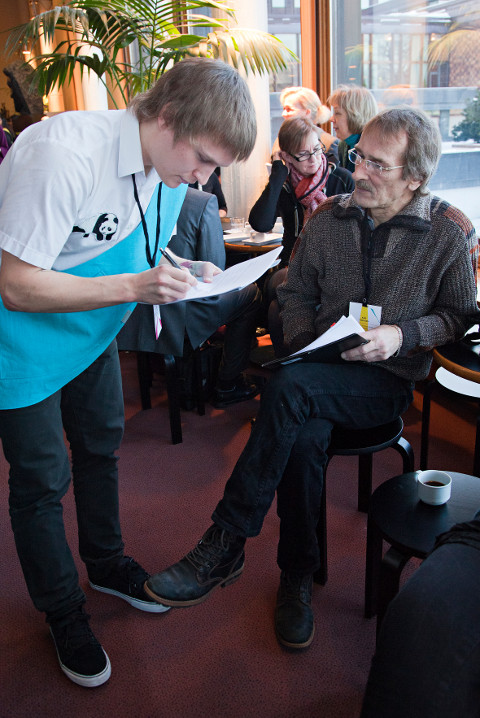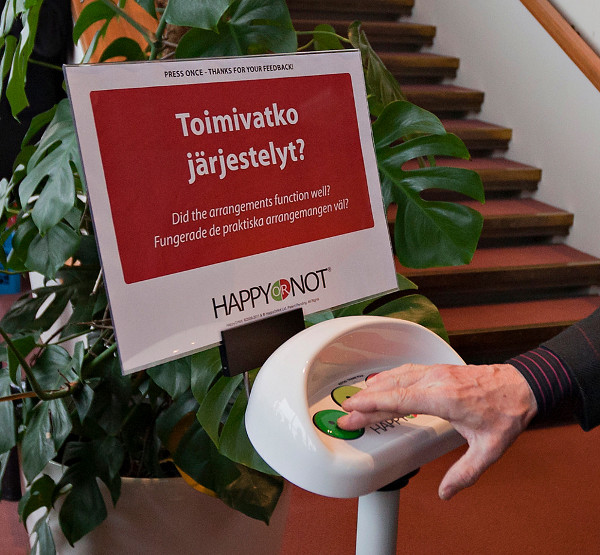
The planning of the evaluations should be integrated into the overall planning of the event. Nowadays there are many possibilities to carry out online, offline, real time or after event evaluations. The evaluations should be as objective as possible to give a true picture of the event. One could argue that if you do not use the evaluation results afterwards, there is no point in evaluating at all. Therefore ensure that the results are used!
In the Solutions local, together Conference several evaluations were carried out during the event. One of the forms of the evaluation was the use of evaluation equipment that gave the immediate reaction on the questions displayed. Another form used were the student interviews on the first day about how people arrived to the conference and what were their expectations. Also the students took examples of the amounts of wastes during the conference, from the hotel rooms and also from the local food restaurants. This showcased that the waste collection per participant of the conference was extremely low 3-4g. This means that the event was successful in reducing waste. All of these evaluations were objectively analysed by the students of the degree programme in sustainable development of the Turku University of Applied Sciences.
In addition to these an online questionnaire was sent to the participants right after the conference and the return rate of the answers was 34%. The results showcase that even the smallest details in practical arrangements were noticed.
For once the conference was sustainable, not just in talks but in actions
Sustainable practical conference arrangements (aprons, name lanyard, voting in the panel, flower decorations, reminders on individual choices on name tag and by e-mail, feedback automats, not receiving a conference bag with unnecessary documents etc)
More of the results of the online questionnaire can be read from the Solutions local, together Conference report.